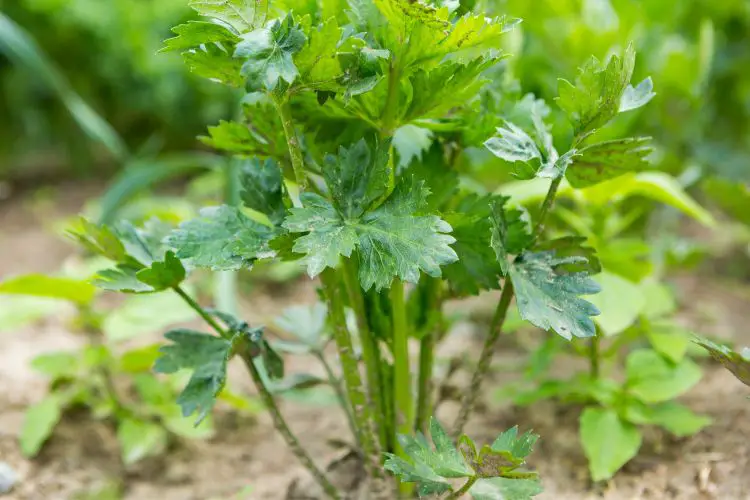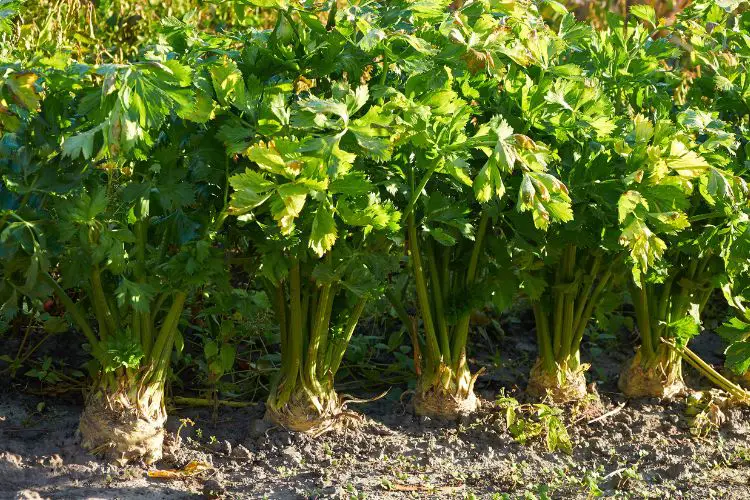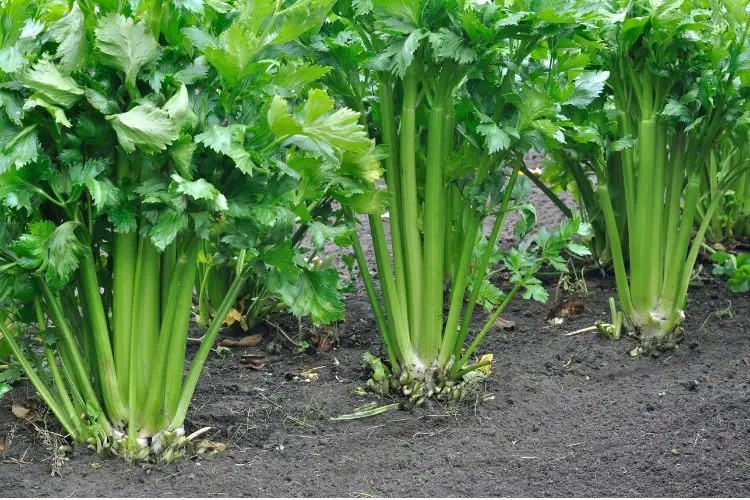Discover the secrets to successfully growing celery in your home garden with this comprehensive guide. From seed to harvest, this informative article will equip home gardeners with the necessary steps, tips, and best practices for cultivating healthy and delicious celery. Whether you’re a beginner or experienced gardener, this guide will help you master the art of growing this versatile and nutritious vegetable.
Understanding Celery and Its Growing Conditions

Celery (Apium graveolens var. rapaceum) is a versatile and nutritious vegetable that is a popular addition to soups, salads, and as a healthy snack when paired with dips. It is a cool-season crop that requires specific growing conditions to thrive.
Introduction to Celery as a Vegetable
Celery is a member of the parsley family and is grown for its crisp, crunchy stalks. It is a biennial plant but is typically grown as an annual. The stalks, leaves, and seeds of celery are all edible, making it a versatile addition to any home garden.
Ideal Growing Conditions for Celery
Celery thrives in cool, moist climates with temperatures ranging between 60°F to 70°F (15°C to 21°C). It requires full sun but can tolerate some shade, especially in warmer regions. Additionally, celery plants prefer well-draining, fertile soil with plenty of organic matter.
Importance of Soil Quality and pH Levels for Celery Cultivation
The soil should have a pH level between 6.0 and 7.0 for optimal celery growth. It’s crucial to ensure that the soil is rich in nutrients, particularly nitrogen, phosphorus, and potassium. Amending the soil with compost or well-rotted manure before planting can help provide the necessary nutrients for healthy celery growth.
Choosing the Right Celery Varieties for Your Garden
Overview of Different Celery Varieties

There are three main types of celery: self-blanching, green, and red. Self-blanching varieties are popular for home gardeners as they require less effort to blanch the stalks. Green and red varieties offer unique colors and flavors, adding visual interest to dishes.
Factors to Consider When Selecting Celery Varieties
When choosing a celery variety, consider the climate in your region, the length of the growing season, and your culinary preferences. Some varieties are better suited for specific climates or have different maturation times.
Recommended Celery Varieties for Home Gardeners
Popular celery varieties for home gardeners include ‘Tango,’ ‘Golden Self Blanching,’ and ‘Redventure.’ These varieties are known for their flavor, disease resistance, and adaptability to various growing conditions.
Starting Celery from Seeds
Preparing the Seeds for Planting
Before sowing celery seeds, it’s essential to ensure they are fresh and of high quality. If starting seeds indoors, use seed-starting trays or small pots filled with a sterile seed-starting mix.
Best Practices for Sowing Celery Seeds
Sow the seeds 8-10 weeks before the last spring frost date. Plant the seeds 1/8 inch deep and keep the soil consistently moist until germination occurs.
Tips for Successful Germination of Celery Seeds
Maintain a consistent temperature of around 70°F (21°C) to encourage germination. Using a heat mat can help ensure the soil remains warm enough for the seeds to sprout.
Transplanting Celery Seedlings

When to Transplant Celery Seedlings
Celery seedlings can be transplanted into the garden once they have developed 2-3 true leaves and all risk of frost has passed.
Proper Techniques for Transplanting Celery Seedlings
When transplanting, space the seedlings 8-10 inches apart in rows that are 24 inches apart. Ensure that the soil has been amended with compost and is well-draining.
Caring for Newly Transplanted Celery Seedlings
Provide consistent moisture to the seedlings, and consider using mulch to help retain soil moisture. Protect the seedlings from intense sunlight during the hottest part of the day.
Caring for Celery Plants
Watering and Irrigation Requirements for Celery
Celery plants require consistent moisture throughout the growing season. Avoid overwatering, as celery is susceptible to rot in waterlogged soil.
Fertilization Schedule for Celery Plants
Fertilize the soil with a balanced fertilizer high in nitrogen every 3-4 weeks to support healthy growth. Additionally, side-dress the plants with compost or well-rotted manure halfway through the growing season.
Common Pests and Diseases Affecting Celery and How to Manage Them
Celery is susceptible to pests such as aphids, celery leaf miner, and slugs, as well as diseases like early blight and late blight. Monitor the plants regularly and use organic pest control methods when necessary.
Harvesting and Storing Celery
Signs That Celery Is Ready for Harvest
Celery is typically ready for harvest 3-4 months after transplanting. Look for stalks that are firm, crisp, and have a rich green color.
Techniques for Harvesting Celery
Use a sharp knife to cut the stalks at the base when they have reached the desired size. Avoid damaging the neighboring stalks during the harvesting process.
Proper Storage Methods for Harvested Celery
After harvesting, celery can be stored in the refrigerator. For longer-term storage, consider blanching and freezing the stalks or preserving them in a root cellar.
Conclusion
Successfully growing celery requires attention to detail and adherence to specific growing conditions. By understanding the ideal growing conditions, selecting the right varieties, and following best practices for planting and care, home gardeners can enjoy a bountiful harvest of crisp and flavorful celery stalks. Whether you’re a beginner or experienced gardener, cultivating celery can be a rewarding experience that adds a nutritious and versatile vegetable to your home garden.
